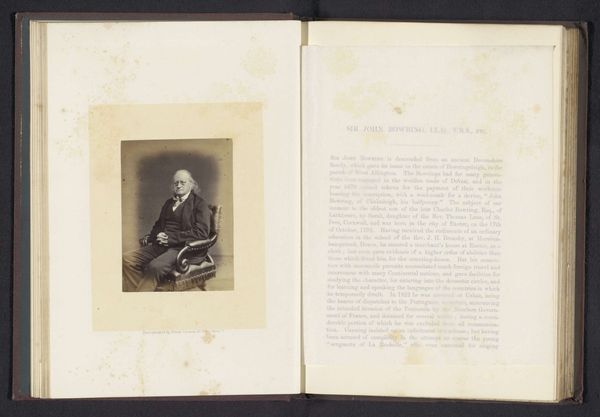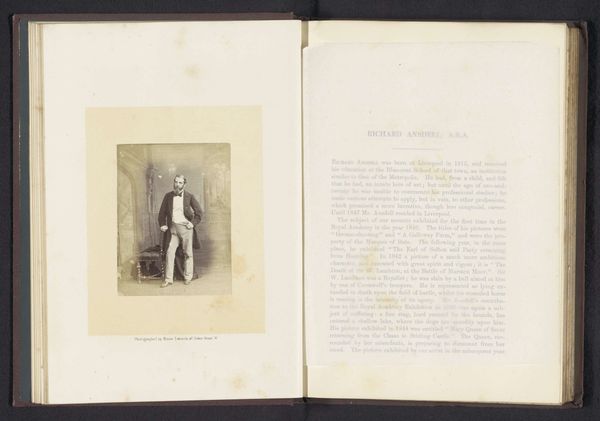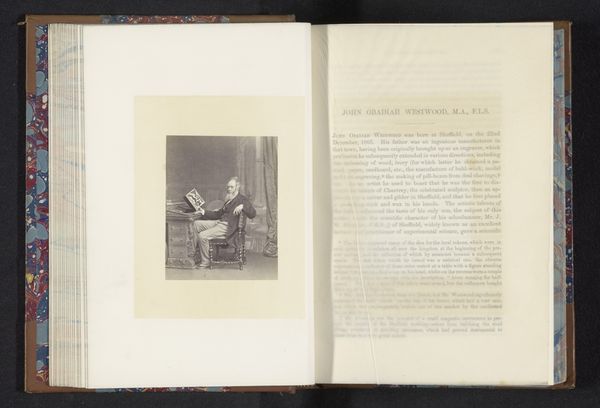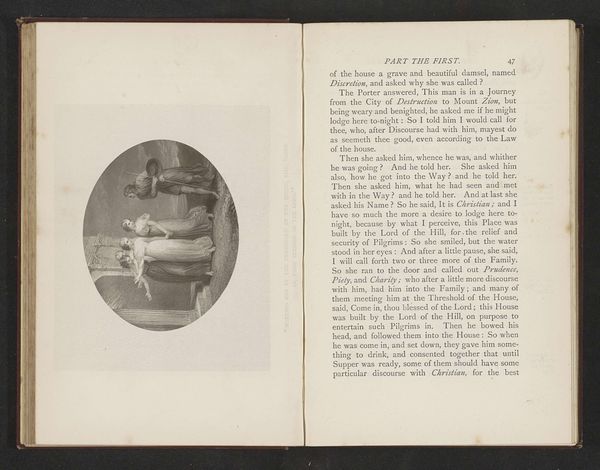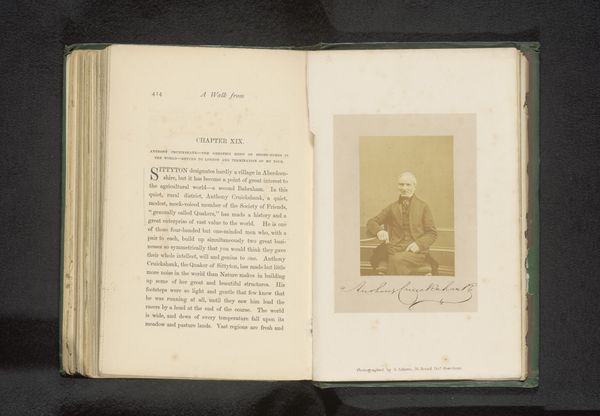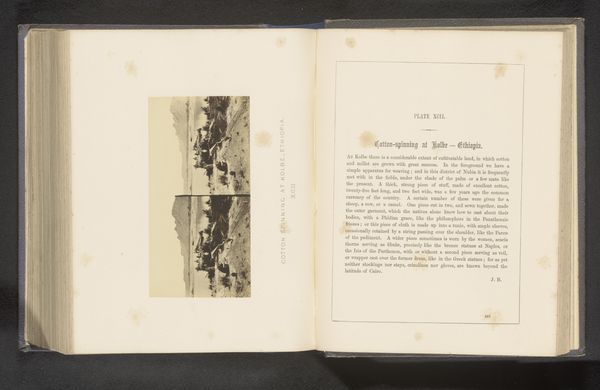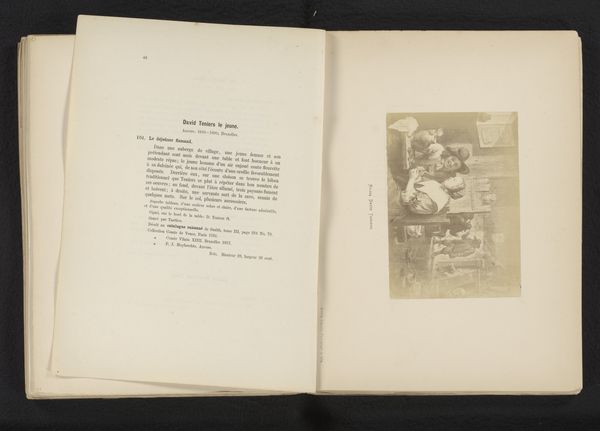
photography, gelatin-silver-print
#
portrait
#
aged paper
#
script typography
#
hand drawn type
#
photography
#
personal sketchbook
#
hand-drawn typeface
#
fading type
#
stylized text
#
gelatin-silver-print
#
thick font
#
handwritten font
#
academic-art
#
historical font
Dimensions: height 89 mm, width 66 mm
Copyright: Rijks Museum: Open Domain
Curator: Looking at this striking albumen silver print dating to before 1866, we see a photographic portrait of William Whewell, a towering figure in his day. Editor: It has such a melancholic feel. The muted tones, the book-like presentation—it almost feels like a memorial, a curated memory. Curator: Indeed. Edwards compiled these portraits in a volume titled “Portraits of British Men of Science." Edwards aimed to document prominent scientific figures, and Whewell certainly fit the bill. As a polymath, Whewell made contributions to mechanics, physics, geology, astronomy, and political economy! Editor: It makes you think about representation—who gets remembered, and how. Seeing him enshrined in this academic, almost sacred, light—it prompts questions about power and knowledge. Was everyone provided such a formal tribute? Probably not. Curator: Well, these photographic portraits circulated in an era when photography was gaining traction in scientific fields as evidence. Edwards would have undoubtedly aimed for these images to contribute to what would later be known of 19th century scientific personalities. It is quite telling that such men should have these images made as portraits. Editor: True. What about the technical aspects of photography being used here? Does it play into the themes of documentation and objectivity versus art and interpretation? Curator: The choice of photography is itself an important part of the story. Compared to painting or sculpture, photography was regarded as objective; the proliferation of this image was dependent on that trust in the medium’s ‘truth’ effect. The way photography then influences that truth by becoming ‘academic art’, tells an interesting story. Editor: So, a powerful man, represented through the then-cutting-edge lens of science and art, further solidifying his legacy... Food for thought about the construction of fame, isn't it? Curator: Indeed. And examining Edwards' intention in displaying the photograph in an open book format is as crucial as considering its purely visual character. Editor: Agreed. It’s a reminder that every image, no matter how "objective," carries its own weight of historical baggage. Curator: And perhaps a push for us to actively question why certain legacies endure, and whose stories remain unseen.
Comments
No comments
Be the first to comment and join the conversation on the ultimate creative platform.



